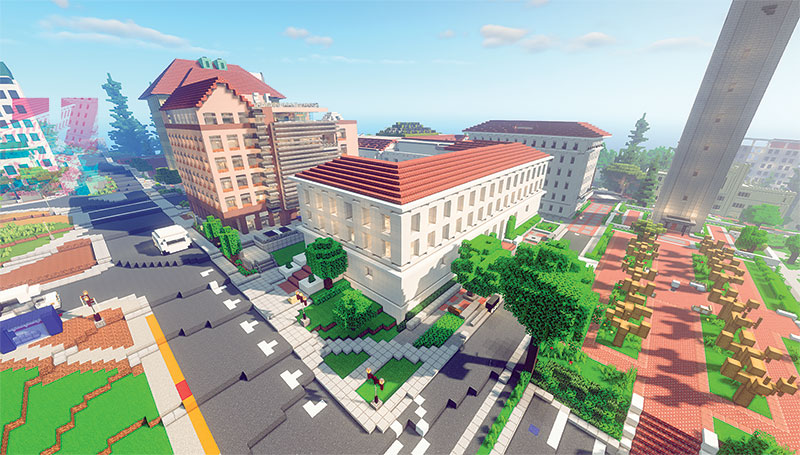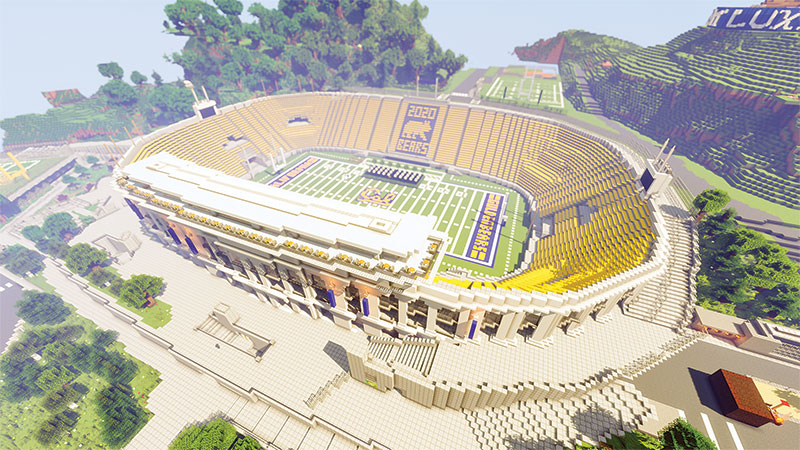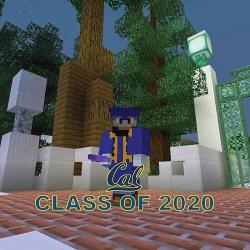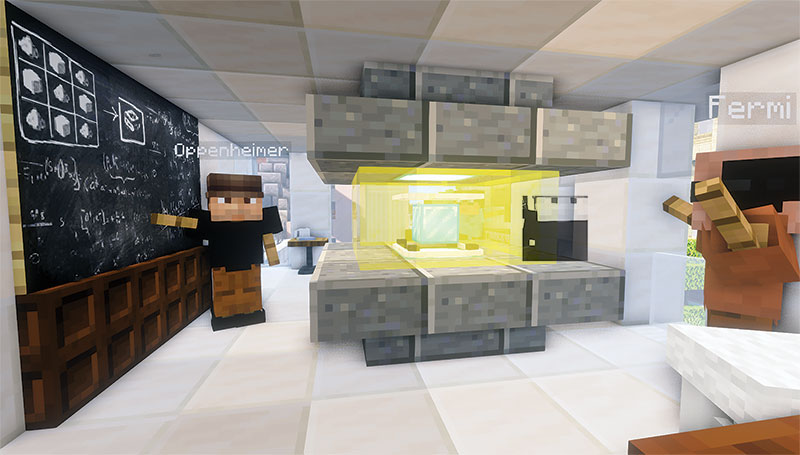Berkeley Students Build an Unexpected Community, Block-by-Block
Fall
2020
Feature
Berkeley Students Build an Unexpected Community, Block-by-Block
Kendra Redmond, Editor
 In the spring of 2020, most of us were dreaming of an alternate reality featuring graduations and festivals instead of shutdowns and losses. Nick Pickett, a then-senior physics major at the University of California Berkeley, didn’t just dream about it—he helped build one.
In the spring of 2020, most of us were dreaming of an alternate reality featuring graduations and festivals instead of shutdowns and losses. Nick Pickett, a then-senior physics major at the University of California Berkeley, didn’t just dream about it—he helped build one.
The project started in March 2020, but the story begins almost ten years earlier. In 2011, the sandbox-style video game Minecraft was officially released by Mojang Studios. With broad appeal and endless opportunities to explore, create, and modify a virtual world with friends, Minecraft exploded in popularity. It’s the top-selling video game of all time.
Many undergraduates have a special place in their hearts for Minecraft—the video game they grew up on, Pickett says. For him, playing is “borderline meditation,” a relaxing reprieve from coursework. So when campus activities and social gatherings came to a screeching halt last March, it’s no surprise that Minecraft was an appealing alternative to the real world.
When a friend made an offhand social media post along the lines of, “Wouldn’t it be great if we could have graduation in Minecraft?” UC Berkeley student Biorn Lustic thought it sounded like a fun challenge. He reached out to a few friends from school and started a multiplayer Minecraft server. They decided to build a scale replica of Memorial Stadium, the football stadium used for graduation, and hold a mock ceremony for a few close friends.
News spread. Pickett heard about the stadium and took a virtual tour. He was a big fan, but he also noticed that a tunnel off the stadium, a behind-the-scenes area used by the marching band, wasn’t quite right. He offered to fix the tunnel and became one of the project builders.
After completing the stadium, the group decided to build the practice field next door. And then, Pickett says, they just “went bananas.” Why not make the whole campus and its 120 buildings? It was a tall order for a few short months. May 16 was the target date, the day that would have been graduation day at UC Berkeley, if not for the COVID-19 pandemic. “Blockeley University” was born.
A call went out, and ten volunteers turned into 100, then 300. Pickett became a building lead, keeping projects on schedule and doing quality control. Other students were builders, back-end programmers, public relations leads, and event planners preparing for a virtual graduation ceremony and a two-day music festival.
Hunter Hall, a senior astrophysics major, was friends with Lustic through rowing and involved in Blockeley from the start. The goal wasn’t just to replicate campus but to do it in detail and to scale. In addition to building, Hall helped pull together campus maps, satellite maps, and school records for builders to reference.
One of Hall’s specific tasks was the campus terrain. An astrophysics researcher, Hall started with high-resolution topographic data of the area collected by NASA’s Shuttle Radar Topography Mission in 2000. He translated the data into a colormap of elevation and then correlated the map by pixel to Minecraft blocks. In Minecraft, each block equates to 1 m3.
Building interiors—classrooms, offices, and labs—were brought to life by students intimately familiar with them. Along with fellow physics and astronomy classmates, Hall and Pickett filled the physics buildings, Le Conte Hall and Birge Hall, with nods to history and shared experiences.
Room 329 Le Conte features Hall’s blocky depiction of the first cyclotron, built at Berkeley by Ernest Lawrence and his students in 1932. Avatars of J. Robert Oppenheimer and Enrico Fermi, two cyclotron pioneers, are hard at work in the room―Oppenheimer at a chalkboard that’s still in room 329 today. Two infamous undergraduate lab spaces reflect more modern memories, brimming with references to inside jokes among current students and recent graduates. It’s been a cathartic process for Pickett. “Especially in times like these, it’s important to acknowledge memories and what we’re missing out on,” he says.
What started off as a casual activity quickly gained national media attention and piqued the interest of students, parents, prospective students, sponsors, musical talent, and the UC Berkeley administration. Everyone wanted to be involved. The university reached out to potential speakers. A production company, OS Studios, donated resources for a livestream. The wind ensemble put together an arrangement for the occasion, each person recording their part individually at home.
“It was definitely one of the strangest moments of my entire life,” Pickett says of the unofficial graduation ceremony. He sat in his living room during the ceremony, manning two computers—one as an attendee, the other as ceremony director. His parents, logged into Minecraft accounts created just for the occasion, watched proudly on their own screens. One of the keynote speakers was Lydia Winters, a founding member of Mojang Studios.
It all worked. On May 16, nearly 1,000 people attended the ceremony via the Blockeley Minecraft server and another 15,000 tuned in to the livestream. The ceremony was followed by an online celebration—a music festival featuring more than 60 acts, lasting two days.
The virtual campus is still open to visitors and still expanding. More than 300 students and alumni are active contributors, adding popular spots around campus and personal details: A Black Lives Matter protest. A van driving out to rowing practice. An inside joke in the band room. Blockeley University is a kind of time capsule. “It’s a living monument of UC Berkeley and its students,” Pickett says. “It’s a place where we can express memory.”
The Blockeley team is now working with UC Berkeley to officially archive this community-built Minecraft world. They’re also partnering on a second world, replicating the campus as it appeared in 1893. The team has advised several schools interested in hosting similar events and are documenting their back-end processes to share with others.
Hall says the founders were just having fun. They had no idea their project would become a community center and a gathering place for thousands. They never expected that parents would cry watching the ceremony or that hundreds of builders would pour their hearts into creating spaces that defined their UC Berkeley experience. They didn’t expect students who had never met in person to form new, lasting friendships in Minecraft. But the project took on a life of its own. Despite travel restrictions and quarantines, the community came together to build, celebrate, and process their collective experience through Blockeley University.
This whole endeavor illustrates that we now live in a time when large, collaborative, virtual communities can support one another even during a pandemic, says Hall. “This is where the internet and technology are now…If we, or anyone, can do this in Minecraft, imagine what could be in the future.”
Visit Blockeley: Blockeley.com
Server IP address: mc.blockeley.com



